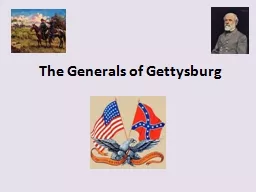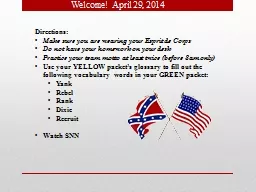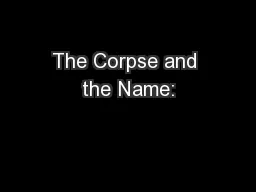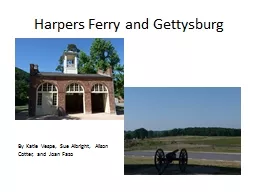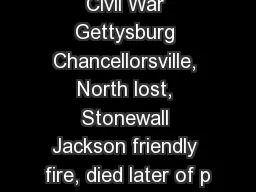PPT-The Generals of Gettysburg
Author : liane-varnes | Published Date : 2018-09-25
The Battle of Gettysburg July 1 3 1863 Thought by many to be the turning point of the war Casualties numbered about 51000 Ended Lees invasion of the north 120
Presentation Embed Code
Download Presentation
Download Presentation The PPT/PDF document "The Generals of Gettysburg" is the property of its rightful owner. Permission is granted to download and print the materials on this website for personal, non-commercial use only, and to display it on your personal computer provided you do not modify the materials and that you retain all copyright notices contained in the materials. By downloading content from our website, you accept the terms of this agreement.
The Generals of Gettysburg: Transcript
Download Rules Of Document
"The Generals of Gettysburg"The content belongs to its owner. You may download and print it for personal use, without modification, and keep all copyright notices. By downloading, you agree to these terms.
Related Documents

